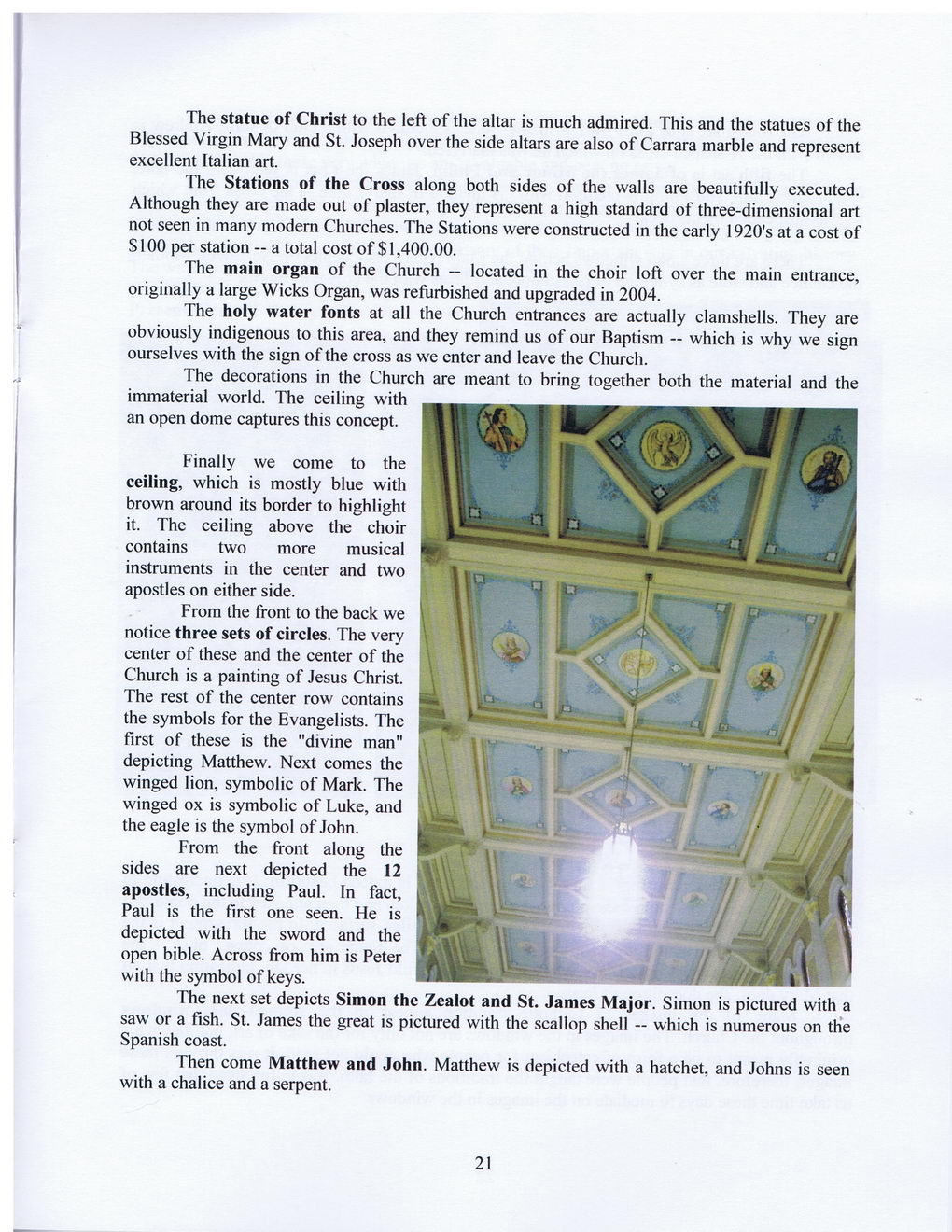This text was obtained via automated optical character recognition.
It has not been edited and may therefore contain several errors.
The statue of Christ to the left of the altar is much admired. This and the statues of the Blessed Virgin Mary and St. Joseph over the side altars are also of Carrara marble and represent excellent Italian art. The Stations of the Cross along both sides of the walls are beautifully executed. Although they are made out of plaster, they represent a high standard of three-dimensional art not seen in many modem Churches. The Stations were constructed in the early 1920's at a cost of $100 per station -- a total cost of $1,400.00. The main organ of the Church -- located in the choir loft over the main entrance, originally a large Wicks Organ, was refurbished and upgraded in 2004. The holy water fonts at all the Church entrances are actually clamshells. They are obviously indigenous to this area, and they remind us of our Baptism — which is why we sign ourselves with the sign of the cross as we enter and leave the Church. The decorations in the Church are meant to bring together both the material and the immaterial world. The ceiling with an open dome captures this concept. Finally we come to the ceiling, which is mostly blue with brown around its border to highlight it. The ceiling above the choir contains two more musical instruments in the center and two apostles on either side. From the front to the back we notice three sets of circles. The very center of these and the center of the Church is a painting of Jesus Christ. The rest of the center row contains the symbols for the Evangelists. The first of these is the "divine man" depicting Matthew. Next comes the winged lion, symbolic of Mark. The winged ox is symbolic of Luke, and the eagle is the symbol of John. From the front along the sides are next depicted the 12 apostles, including Paul. In fact, Paul is the first one seen. He is depicted with the sword and the open bible. Across from him is Peter with the symbol of keys. The next set depicts Simon the Zealot and St. Janies Major. Simon is pictured with a saw or a fish. St. James the great is pictured with the scallop shell — which is numerous on th’e Spanish coast. Then come Matthew and John. Matthew is depicted with a hatchet, and Johns is seen with a chalice and a serpent. 21

Our Lady of the Gulf Church Document (198)